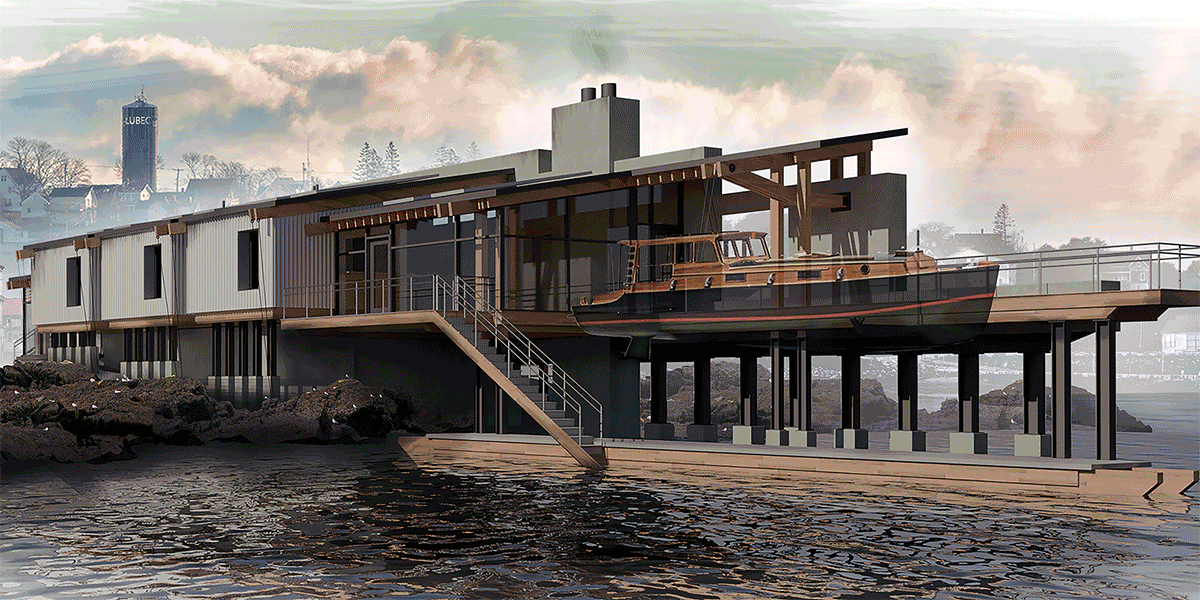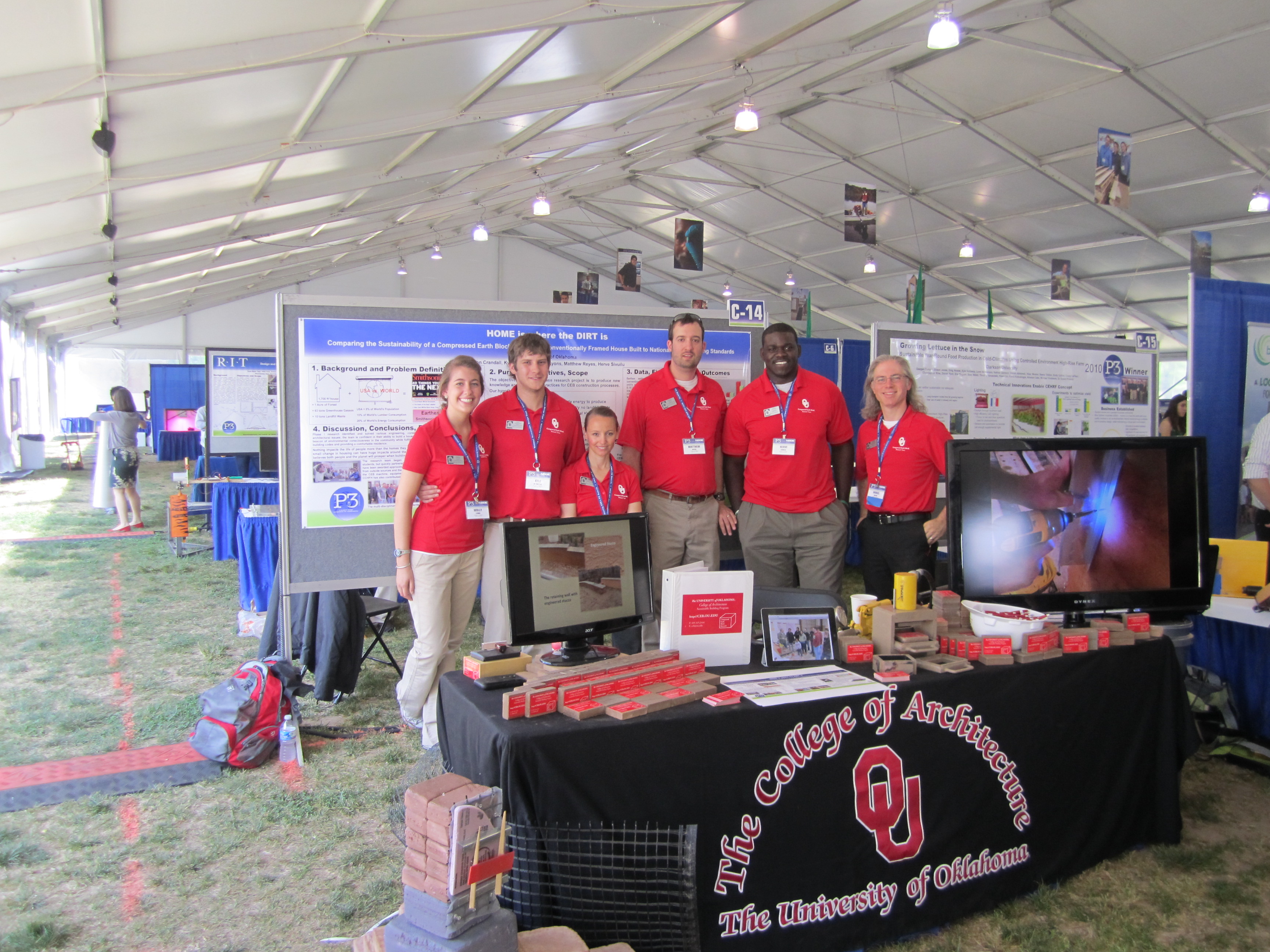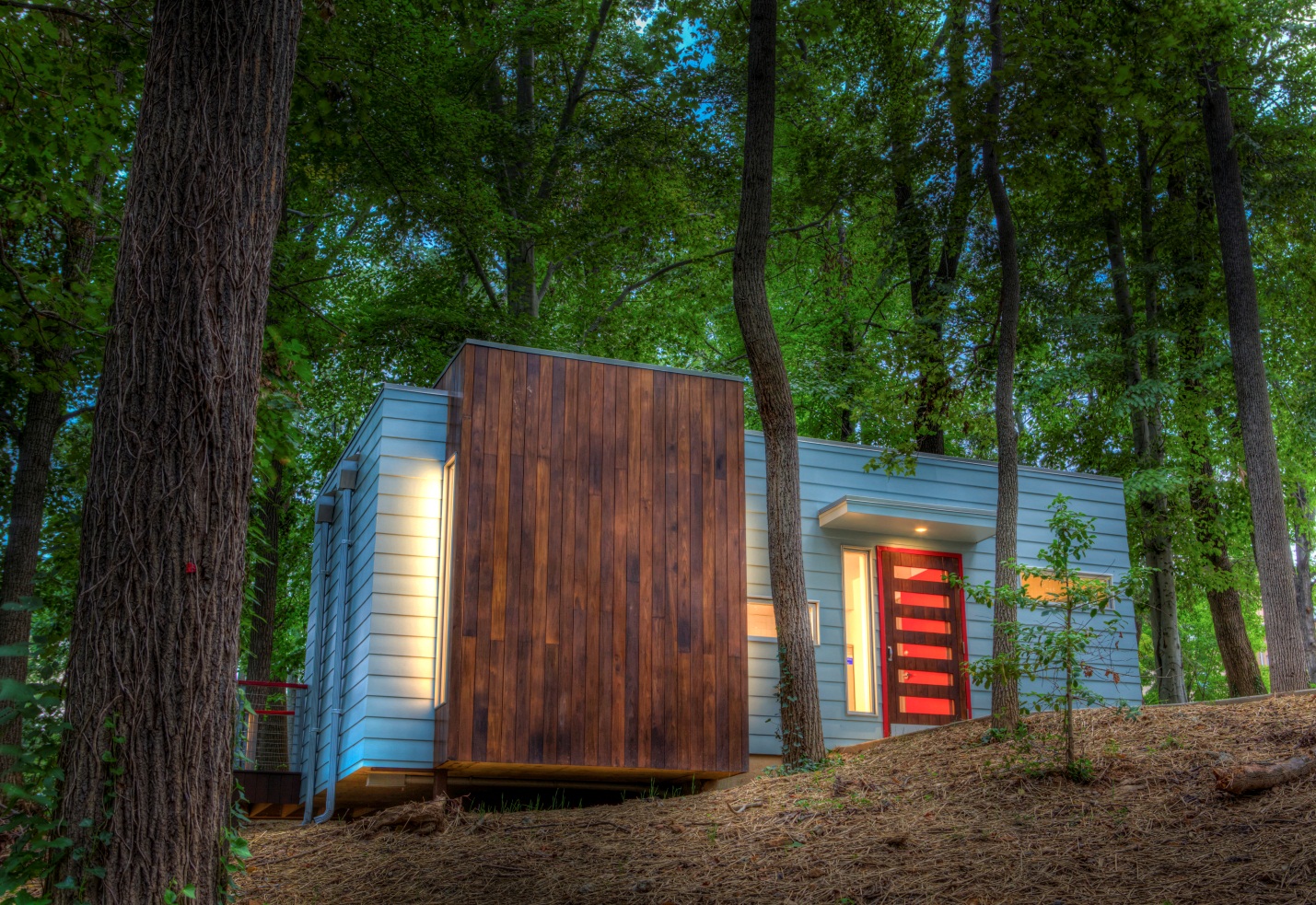Posts
California State Polytechnic University, Pomona
The Department of Architecture welcomes Robert Alexander to join the faculty as an Assistant Professor Design and Digital Instruction. Robert Alexander, principal of BobCat Studio received his bachelor’s degree in Architecture from Cal Poly Pomona in 2001. In 2005 he received his Masters in Architecture from Harvard University’s Graduate School of Design. In addition to his professional experience on a wide variety of projects with the architecture firms Rafael Vinoly Architects, Behnisch Architekten, and Daly Genik. In 2008, Mr. Alexander won the Cavin Fellowship and received the Boston Society of Architect’s Rotch Scholarship in 2013, which started his current research on the urban effects of large-scale incomplete building projects in Europe.
Associate Professor and Chair, Sarah Lorenzen recently co-curated the widely acclaimed Competing Utopias exhibit at the Neutra VDL House
Professors Lauren Weiss Bricker and Luis Hoyos have contributed articles to the forthcoming catalog Barton Myers: Works of Architecture and Urbanism, which accompanies an exhibition of the same name on view at the Art, Architecture & Design Museum, UCSB from September 12-December 12, 2014. Professor Bricker has also written “Civic and Educational ‘Architecture As Environmental Expression,’” which will be included in the catalog accompanying the exhibition An Eloquent Modernist: E. Stewart Williams, Architect, the inaugural exhibition of the Palm Springs Art Museum Architecture and Design Center, Edwards Harris Pavilion; the exhibition November 9, 2014-February 22, 2015.
Professor Hofu Wu, recently presented “Outside Forces – Academic Perspective” to showcase the status of the Cal Poly Pomona Healthcare Initiative from the students innovative researches and designs at the American College of Healthcare Architects (ACHA) California Health facility Forum in Oakland, CA.
Associate Professor Pablo La Roche recently published an article in the journal Energy and Buildings entitled Comfort and Energy in Smart Green Roofs. He also presented papers at three recent conferences including the California Higher Education Sustainability Conference, and two papers the World Sustainable Building Conference SB14. He has presented eight recent lectures including, the American Solar Energy Society National Conference ASES 2014, the Society of Building Science Educators Annual Retreat, the Instituto de Ciencias de la Construcción Eduardo Torroja, Madrid, the Practica y Enseñanza de la Arquitectura en California International Workshop Sustainability in the Built Environment, Seville, Spain, and the Façade Tectonics Conference at the University of Southern California. He is the current President of SBSE, the Society of Building Science Educators.
Associate Professor Michael Fox recently presented a paper at the 2014 ACADIA, (Association for Computer Aided Design in Architecture) conference on the Eco-29 project which is a fully interactive kinetic event Hall in Israel. He also wrote the preface to the conference proceedings and is the current president of the Organization. He recently authored a chapter in the book “Building Dynamics”, by Routledge Press, edited by Branko Kolarevic and Vera Parlac. He also contributed to the book, “Space Architecture: The New Frontier for Design Research” edited by Neil Leach,by AD. He authored a chapter in the journal PAJ 109 on Performance and Architecture, edited by Chris Perry and Catheryn Dwyre.
Associate Professor Juintow Lin recently led an attempt to revitalize the California State Parks system, where 12 Cal Poly Pomona graduate architecture students took on the challenge of redesigning a modern cabin and succeeded. The California Parks Forward Commission is making an effort to reach out to students for creative and innovative ideas, as younger generations are not visiting state parks. The students began their project in spring 2014. The timing was just right for the project because of available funding. The Resources Legacy Fund, a consortium of major foundations in California, funded the project. The 150-square-foot cabin is made from recycled and prefabricated elements. It includes a full-sized bed, a bunk bed, and a bench that can accommodate four people. High triangular windows, French doors, and a sloped roof allows for maximum light to enter the cabin. The first prototype was constructed in 4 days in a factory in Phoenix AZ, by CAVCO.
Lecturer Barry Milofsky was appointed by Los Angeles Mayor Eric Garcetti to the Cultural Heritage Commission of the City of Los Angeles, the five-member commission that considers nominations of sites as City Historic-Cultural Monuments (designated City landmarks) and reviews proposed project work affecting more than 1000 existing Historic-Cultural Monuments. The Commission also serves as the city’s primary forum for the discussion of historic preservation policy. Recommendations of the Cultural Heritage Commission are forwarded to the City Council for their final action. The Cultural Heritage Ordinance also gives the Commission the authority to temporarily delay alteration or demolition of historically significant structures until a proper review can be completed.
Lecturer Katrin Terstegen is a Designer and Project Manager with Johnston Marklee & Associates in Los Angeles, where she recently completed “Various Small Fires”, an art gallery in Hollywood, as well as the “Vault House” in Oxnard.
Lecturer Jose Herrasti’s firm MUTUO is currently working on a 5 acre park in the Coachella Valley in collaboration with KDI, a nonprofit dedicated to the creation of low cost, high impact environments that improve the physical, economic, and social quality of life of under-served communities. MUTUO has also been working with a developer in El Paso, TX to transform an area of dilapidated buildings into a thriving community. They are also beginning construction of a three single family development in the Hollywood Hills and a residence in Cordoba, Mexico.
University of New Mexico
3rd AULA Latin American Architecture Symposium
The NEW Mexico
13-15 September, 2012
Important changes are underway in both Mexico and those parts of the United States that were once part of Mexico. Thirty years ago, Joel Garreau identified MEXAMERICA as one of the nine distinct cultural regions of North America. Since then, the Latino population in the USA has exploded and significant scholarship is emerging on the fast-growing Latino built environments in the USA. The word AMEXICO describes the considerable changes that have taken place in large parts of Mexico since the ratification of the North American Free Trade Agreement. Contemporary Mexican cities offer ample evidence of increased American mercantile presence. While in the cultural realm, the most prominent Mexican artists and architects have reacted to 70 years of introspective work with an enthusiastic embrace of international currents.
Following the success of the first two AULA conferences at Harvard University (Import/Export: Latin American Urbanities) and Tulane University (En el AULA), The NEW Mexico: Third AULA Latin American Architecture Symposium provides an excellent opportunity to reflect on the built environments of AMEXICO and MEXAMERICA bringing together prominent scholars and practitioners from both sides of the border to the University of New Mexico. Mexico Cit y
Participants:
DANIEL ARREOLA
TEDDY CRUZ
DEREK DELLEKAMP
LUIS CARRANZA
JOSE CASTILLO
GABRIEL DIAZ MONTEMAYOR
ARMANDO FLORES SALAZAR
STEPHEN FOX
CAROLYN E. GONZALES
MOISES GONZALES
FERNANDO LARA
SARAH LYNN LOPEZ
JUAN MIRO
FIAMMA MONTEZEMOLO
FRANCISCO JAVIER RODRIGUEZ
SAIDEE SPRINGALL
Chairs:
ROBERT ALEXANDER GONZALEZ
GERALDINE FORBES ISAIS
RAFAEL LONGORIA
All events free an d open to the public an d will ta ke place at the Auditorium of the UNM Architecture & Planning Buil ding
University of New Mexico
Mark C. Childs‘, Professor, book Urban Composition will be published as part of Princeton Architectural Press’s Architectural Briefs in April 2012. The book discusses how individual buildings, gardens, public arts works and other built forms can compellingly help compose larger, collectively-made forms such as streets, districts and cities.
Devendra Contractor AIA, Lecturer, with Jared Winchester, received a citation for 2011 AIA Albuquerque unbuilt design award for their competition entry “Patterned Occupancies”, a cross-cultural IT hub outside of New Delhi.
Jared Winchester’s, Lecturer, design projects, SKY_NET: A Power Migration Network and Groundings: Landslide Mitigation Housing with Viktor Ramos, included in Bracket [Goes Soft], edited by Neeraj Bhatia and Lola Sheppard, will be published June 2012. The project “Grounding” received 1st place in the 2011 D3 Natural systems competition and a citation for 2011 AIA Albuquerque unbuilt design award.
University of Oklahoma
Faculty and students from the University of Oklahoma College of Architecture’s Sustainable Building Program were awarded a $90,000 grant from the Environmental Protection Agency after winning Phase II funding at the EPA P3 Expo and Competition in Washington D.C. The students performed demonstrations of their Compressed Earth Block (CEB) building technology on the National Mall April 21-23. The team was made up of construction science assistant professor Dr. Lisa Holliday, assistant professor of architecture Daniel Butko, Ph.D. student Matt Reyes, construction science students Molly Lyons and Kyle De Freitas, and architecture students Herve Sivuilu and Aaron Crandell. The team was awarded the grant at a ceremony Monday night. The grant will allow the CEB team to build a compressed earth block house in Norman, Oklahoma in partnership with Cleveland County Habitat for Humanity (CCHFH). The team will compare the CEB home to a conventionally wood framed house recently built by CCHFH to National Green Building Standards (NGBS) on an adjacent lot. Both houses will be instrumented, monitored, and compared for all aspects of sustainability as defined by the NGBS. The ultimate goal is to design a system whereby Habitat for Humanity affiliates across the United States could use CEB technology to provide affordable housing that is more resistant to wind damage and more environmentally sustainable than those built with conventional technologies.
Anthony Cricchio, assistant professor of architecture, received an Award of Excellence from the American Society of Architectural Illustrators for his work “Over Hong Kong.” His selection will be featured in the Architecture in Perspective exhibition that will travel around the country this year. His piece was chosen from nearly 400 entries from five continents.
Hans Butzer, associate professor of architecture, and his team had the official ribbon-cutting ceremony with the City of Oklahoma City for their Skydance Bridge. The bridge, meant to evoke the “sky dance” of Oklahoma’s state bird, the scissor-tailed flycatcher, eventually will connect the north and south sections of the MAPS 3 urban park. The bridge will be lit up at dusk each day.
5th-year architecture student in the Philadelphia Studio, taught by Dr. Khosrow Bozorgi, professor of architecture, had their final presentations with KlingStubbins. Brad White Fiske, FAIA, Senior Principal, Director of Design, Philadelphia Office, and Joseph Castner, AIA, RIBA, Principal, Managing Director, Cambridge (Mass) Office gave the final review. The students worked on the project generating design concepts for a diverse architectural mixed-use development that connects the University of Pennsylvania to downtown Philadelphia. The students used the College of Architecture’s Distance Learning Center to video conference with KlingStubbins including Richard Farley, FAIA, PE, LEED AP, Principal, Director of Corporate and Commercial Projects, staff and faculty at the University of Pennsylvania and other city officials in Philadelphia throughout the fall and spring semesters.
Call for Presentations: ACSA/AIA Housing Research Lecture Series
The AIA Housing Knowledge Community (AIA Housing) and the Association of Collegiate Schools of Architecture (ACSA) are collaborating to increase public and professional awareness of environmental, community and technical research for housing. The ACSA/AIA Housing Research Webinar Series will provide free online continuing education for faculty, students, architects, architectural interns and others that will support evidence-based practice in housing and community development. Proposals are being accepted through April 20 for the first series of three webinars that will be offered in fall of 2012.
Proposals are sought for presentations that address primary-source, experimental, applied, or translational research. Examples of areas of interest include but are not limited to healthy homes, sustainable construction, international practice, and community engagement.
The one-AIA-learning-unit webinars will be offered online through the GoToMeeting platform, with slides presented on screen and audio over the telephone. Each moderated presentation will feature one or two speakers for approximately 35 minutes, followed by a live question-and-answer period. Webinars typically attract 150-250 participants. The webinar will also be available on the AIA’s YouTube channel. No compensation, other than free learning units, is offered to presenters.
Proposals will be peer-reviewed using the following criteria:
• Quality of the research
• Applicability to practice or policy
• Previous experience of presenters
• Quality of graphic images
• Content addresses health, safety and/ or welfare in architecture
Submit the following information in PDF format:
• Name and contact information for presenters – indicate prime contact
• Biosketch or resume for presenters (1 page maximum)
• Learning Objectives – 4
• Summary – 150 words max
• Sample powerpoint– 10 slides max
Up to 9 proposals will be selected for development.
Selected presenters will also be required to submit the following:
• Photograph of speakers
• Powerpoint Presentation
• AIA waiver
Up to 6 proposals will be selected for development as a 2012 or 2013 presentation.
Schedule
March 8 Release RFP
April 20 Phase 1 Applications Due
May 21 Finalists Announced
July 1 Presentations Due
August 1 Speakers Announced
September 10 Practice Presentation 1
September 24 Presentation 1
October 15 Practice Presentation 2
October 29 Presentation 2
November 5 Practice Presentation 3
November 26 Presentation 3
Contact: Submit proposals and questions to Michael Monti, ACSA executive director, mmonti@acsa-arch.org, 202.785.2324 x 7.
University of New Mexico
Eleni Bastéa, Ph.D., Professor, received a grant from the Colorado European Union Center of Excellence to develop a new interdisciplinary course titled: “Cities and Literature: Urban Change and Urban Narratives in Contemporary Europe,” Spring 2012.
Margaret Pedone AIA, Lecturer, recently was awarded an ‘unbuilt citation award’ from the AIA Albuquerque for her project “3 River Barges”.
Kramer E Woodard, Associate Professor, has received a United States utility patent for his innovative prefabricated wall and structure system for use in small dwellings, particularly where rapid deployment is needed, as in disaster relief. Currently Woodard is working on two other systems to provide heating, cooling and electricity using solar energy, that will work in conjunction with the wall system. He expects utility patents for those systems next year.
Kristina H. Yu, Assistant Professor, competed and recently was awarded the Teaching Allocation Grant UNM for her study titled, “Technologically Enhanced Interactive Desk Critique: Reinvigorating the Studio Classroom”. Prof. Yu along with Electrical Computer Engineer Prof. Olga Lavrova (UNM) competed to teach interdisciplinary courses ”Communal Concerns – Housing and Photovoltaic Assets” to be taught at the Schloss Dyck Foundations in Neuss, Germany Summer 2012. Yu was recently selected to participate in the NSF funded faculty leadership workshop under the initiative of the NM Office of Experimental Program to Stimulate Competitive Research. The training, courses and funding are directly related to her research area of Housing Development and Shared Amenities.
Catholic University of America
As in the previous four years, the School of Architecture & Planning at The Catholic University of America had a world-renown architect teaching a studio and lecturing at CUArch as part of our Walton Critic Program. Previous Walton Critics included Antoine Predock (2009), Craig Hartman (2010), and Juhani Pallasmaa (2011).
This year the Walton Critic and Professor in Residence was architect Alberto Campo Baeza. Campo Baeza is a Spanish architect internationally known for his luminous, simple yet nuanced, and always provocative architecture. His work is the result of a long, continuous, and disciplined investigation into the miracle of light in space. He has received extensive global recognition, including the Buenos Aires Biennial International Critic Prize (2009), the Eduardo Torroja Award (2005), the Venice Biennial (2000), and the Miami Gold Biennial Gold Medal (2000). Campo Baeza was also a selected candidate for The American Academy of Arts and Letters 2010 Architecture Award and a finalist in the 2011 Premio de Arquitectura Española. His built work, drawings, and ideas have been widely published in Spanish, English, Italian, French and Japanese. Campo Baeza has been a faculty member at the ETSAM-UPM in Madrid since 1976. On 09/12/12, Campo Baeza presented the lecture “Ineffable Architecture: Buliding Poetry by Thinking with Your Hands” at the Crough Center for Architectural Studies of The Catholic University of America. Additionally, on 09/19/12 7:00pm, Alberto Campo Baeza gave a lecture on his current work and reflections at the District Architecture Center (DAC) in downtown DC as part of the event “Architecture Week 2012” organized by the DAC. Please contact Director of the Sacred Spaces concentration Professor Julio Bermudez for more information.
The 2012 Summer Institute for Architecture (SIA) included several successful new initiatives including an Architectural Design Studio led by Ben Gilmartin (Diller Scofidio + Renfro); a Traveling Studio to NYC with Tod Williams Billie Tsien Architects, and Boston with Stoss LU; and a Design-Build Studio in Hopewell, Ohio. The Summer Institute also hosted a successful speaker series with Steve Vogel (University of Detroit Mercy); June Williamson (City College of New York); Billie Tsien (Tod Williams Billie Tsien Architects); and Ben Gilmartin (Diller Scofidio + Renfro). A publication is currently in development with an anticipated January 2013 release date.
Each summer, the Catholic University of America School of Architecture and Planning conducts the Summer Institute for Architecture featuring numerous undergraduate and graduate level courses. Among these are design studios and elective courses, including history of architecture, graphics, furniture design, theory, and computer-aided design/fabrication. Plans for the 2013 SIA include the NADAAA Design Studio (directed by Nader Tehrani) and a traveling studio to Los Angeles, CA. Please contact SIA Director Professor Julie Kim for more information.
Associate Professor Julio Bermudez received a grant to complete the second phase of his interdisciplinary neuroscience research of architecturally induced contemplation (done in collaboration with several researchers and departments of the University of Utah). Bermudez will be presenting two papers this Fall. The first work coauthored with Brandon Ro is entitled “Extraordinary Architectural Experiences: Comparative Study of Three Paradigmatic Cases of Sacred Space (The Pantheon, The Chartres Cathedral and the Chapel of Ronchamp) at the 2nd International Congress on Ambiances (Montreal, Canada). The second work “fMRI Study of Architecturally-Induced Contemplative States” will be presented at the Academy of Neuroscience for Architecture (ANFA) 2012 Annual Conference (La Jolla, CA). In addition, professor Bermudez will travel this November to the University of San Juan in Argentina invited by the Facultad de Arquitectura y Urbanismo to give a lecture entitled “Lo Cotidiano y lo Sagrado: Reflexiones desde el Arte y la Arquitectura” and teach the course “Philosophy in/of Architecture.”
As part of the AIA National Convention in Washington this past May, Associate Professor Eric J. Jenkins participated in the AIA Los Angeles and Broadcaster’s multimedia guide to Washington, DC architecture. This smartphone application helps guide listeners to architectural sites accompanied by commentary from local architects and educators.
Assistant Professor Hollee Hitchcock Becker presented a paper in the Smart and Sustainable Building Environments Conference in Sao Paolo, Brazil last June 2012. She also won a SASBE 2012 “Highly Commended Paper Award” for her work entitled “Sustainable, Affordable Housing using Locally-grown Bamboo”.
Assistant Professor Carlos Reimers was invited to be part of the Network Session “The Search for Multi-Story Incremental Housing” organized by the MIT’s Special Interest Group in Urban Studies SIGUS and presented in the Sixth Session of the United Nations World Urban Forum in Naples, Italy in September 2012. Professor Reimers also presented a paper on alternatives for the manufactured housing industry entitled “Beyond the Trailer: Rethinking Affordable Manufactured Housing in the U.S.” in the ACSA Fall 2012 Conference in Philadelphia “Off Site”.
The Catholic University of America is pleased to announce four new faculty members:
Assistant Professor Patricia Andrasik has been teaching both studios and sustainability courses at the CUArch Master of Sustainable Design Program since 2004, while practicing at an international architectural firm, She teaches LEED(ing) Green; Sustainable Synergies in Building Assessment, and recently developed a course called LEED EB: O&M on the Crough Architectural Center at CUA tracking and metering utility consumption to improve sustainability. Patricia will be launching two new courses in lighting and environmental analytics next year.
Assistant Professor Dr. Charles Hostovsky joined the Catholic University of America to teach in the Master of City and Regional Planning program. “Chuck” is a Registered Professional Planner in Canada, and taught for 15 years at the University of Toronto. He has published widely and won two teaching awards, including the 2011 Government of Canada award for teaching sustainability. In professional practice for 25 years and with an extensive portfolio of planning projects, he was one of the Project Managers that won the Canadian Institute of Planners award for planning excellence in Transportation and Infrastructure in 2011.
Assistant Professor of Practice John Nahra, is the owner and Principal of Nahra Architects. John has been an architect in the design and construction industry of the greater Washington, DC area for the past 10 years. He received his dual degrees in Architecture and Civil Engineering at the Catholic University of America and is a member of the AIA, NCARB and the USGBC. John will be exploring the added value of architectural design in the real estate development process as well as serving as advisor in the Thesis program.
Visiting Assistant Professor David Dewane is an architect with Gensler. In 2010 he founded Librii with seed funding from the World Bank Institute. The project aims to construct a network of digital libraries along Africa’s expanding fiber optic infrastructure. David trained at the Center for Maximum Potential Building Systems in Austin, TX under renowned Pliny Fisk III and has a Master of Architecture from Rice University. He has held leadership positions on three teams in the U.S. DOE’s Solar Decathlon competition.
In the summer of 2009, the Catholic University of America Design Collaborative (CUAdc) was approached by the Franciscan Monastery of the Holy Land with the special request to design four Hermitages on the Monastery grounds in Washington DC. A design studio led by CUAdc Director William Jelen AIA began work analyzing the site and the unique challenges and opportunities of the task. On the following Fall, two graduate studios led by professor George Martin and professor Lou Boza examined both the spiritual opportunities and the tectonic opportunities of a hermitage building. Finally in the Spring of 2010 as part of Catholic University’s Comprehensive Design Studio, Director Jelen led a 12 architecture student studio towards a singular design. This group known as Studio 12, designed what became the concept of the first Hermitage to be built. The design concept centered on the interplay and blending of the sacred and profane worlds as they pertain to an individual’s daily patterns, routines, and needs. The idea that each moment of ordinary daily life can be an opportunity for sacred appreciation and meditation, guided everything from the choice of natural materials and textures to the orientation of the unit itself facing East towards Jerusalem. The hermitage contains a sleeping area, kitchenette, and bathroom in approximately 350sf. The design incorporated sustainable site considerations, electrical, plumbing and mechanical systems including the use of natural ventilation. Through the choice of materials the design was meant to integrate into the existing historic campus. The first Hermitage is ADA compliant as well. The design for the project was awarded the 2010 AIA Unbuilt Award from the DC chapter of the American Institute of Architects. Work of the CUAdc has continued through the completion of construction on the interior design for the Hermitage including designing and fabricating a custom made chair, bed and desk for the Hermitage. For more information contact CUAdc Director William Jelen.

 Study Architecture
Study Architecture  ProPEL
ProPEL 




